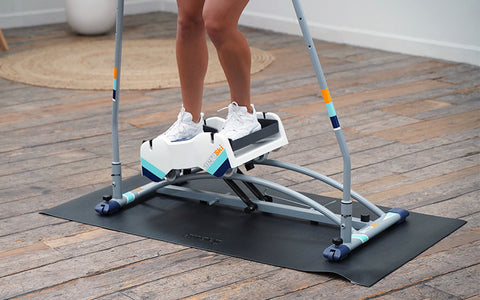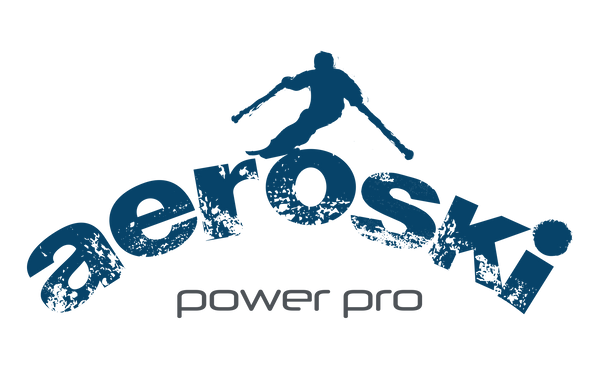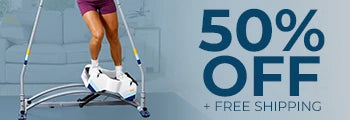3 Skiing Conditioning Workouts For All Skiing Difficulty Levels
Once skiing season rolls around again, you may find yourself wanting to brush up on key skiing skills before you hit the slopes. Skiing conditioning workouts can help you improve and maintain your skiing fitness year-round. And if you’re just getting started with skiing, skiing conditioning workouts can be a great way to prepare yourself before you step off the lift and head down the mountain for the first time.
Here is Aeroski’s guide to the best skiing conditioning workouts for all skiing difficulty levels so you can get in shape for your next alpine getaway, whether you’re a seasoned skier or a skiing newcomer!
Choosing Skiing Conditioning Workouts

Conditioning workouts, in general, are meant to help improve your strength and endurance so you can maintain a better overall fitness level. When planning your skiing conditioning workouts, you can choose certain types of exercises that will help you build specific skills based on your goals. For example, workouts that target balance or flexibility would help improve your skiing abilities because those are vital skills you need to be a great skier.
Before we describe the best skiing conditioning workouts to help improve your skiing abilities, here are a few benefits of conditioning workouts:
- Injury Prevention — The improvements in flexibility, muscle tone, and strength that conditioning exercises can make it less likely that you’ll get injured when skiing. And, if you do happen to get hurt, your body will recover more quickly because it is in better shape.
- Stress Relief — Any kind of physical activity can benefit mental health. Specific conditioning exercises such as yoga can be even more effective in providing stress relief while also building skills like flexibility that are important for skiing.
- Improved Overall Fitness — The goal of all conditioning routines is to improve your all-around fitness level to be prepared for your favorite activities and sports. Gains in strength and endurance from conditioning workouts are meant to transfer over to other forms of exercise like skiing so you can approach them with confidence.
The best thing about conditioning workouts is that they can be customized to your individual goals and fitness level. Whether you are an athlete used to intense workouts or just getting into the fitness world, you can design a conditioning workout that’s right for you and your specific goals. Read on to learn more about skiing conditioning workouts for all skiing difficulty levels.
Improve Balance

Balance is essential for skiing. This is because staying upright on your skis and gliding smoothly down the trail requires balance. Many skiing conditioning workouts focus on perfect balance for all skiing difficulty levels. Even better, these exercises tend to be easy to integrate into a fitness routine.
To focus on balance, you can do workouts with exercise equipment specially designed to target balance — such as a stability ball or balance board. Or you can try activities like tai chi or yoga that task you with performing poses that require a great form to perfect.
Simple strategies for focusing on balance in your skiing conditioning workouts include knee lifts, or putting your weight on one foot while standing, and lifting the other foot up. Improving your balance can be as easy as adding a few new stretches to your fitness routines, such as hip, hamstring, and quad stretches. These types of balance skiing conditioning workouts can be done by those of any fitness level and are sure to help those of all skiing difficulty levels on the slopes.
Focus on Flexibility
Skiing conditioning workouts that focus on flexibility will help skiers of all skiing difficulty levels become better at the sport. A greater range of motion is possible with improved flexibility, making for a more seamless skiing experience. Injuries also become easier to recover from and less likely to occur when you are more flexible. Additionally, flexibility supports balance, meaning that flexibility conditioning exercises can also benefit your work on your balance conditioning.
To prepare for skiing season, consider trying out flexibility exercises that target the specific areas of the body used in skiing. By ensuring that key muscle groups involved in skiing are flexible, you will ski more effectively and feel less sore after a long day spent hitting the powder. Some of the main muscles skiers use are the hips, calves, hamstrings, quads, and feet. Skiing conditioning stretches such as hip flexor stretches, and plantar fascia stretches will help prepare your body for the movements involved in skiing.
Choose Aeroski To Focus on Strength, Explosive Motion, and Cardio

Balance and flexibility are not the only essential skills to focus on when considering the best skiing conditioning workouts for all skiing difficulty levels. Training for skiing should also emphasize getting stronger, preparing for explosive power and performing cardiovascular exercise. The Aeroski workout machine can be incorporated into your fitness routine to focus on these significant skiing conditioning workouts:
- Strength Training
- Explosive Motion
- Cardio Workouts
Strength Training

Muscle strength and endurance are essential for skiers because skiing uses muscles throughout the entire body. Working on your overall strength will improve how easily you can ski and help you enjoy your skiing experience even more. It will also make injuries at the end of a long day of skiing less likely.
Traditional strength training exercises like weight training can be tough on your joints, and you have to target different muscle groups with multiple other exercises individually. The Aeroski workout machine is an excellent joint-friendly alternative to typical weight lifting.
Aeroski works out all of the major muscle groups, so you can strengthen and tone all of the muscles you will need for skiing with one exercise! Even better, Aeroski mimics the motions of downhill skiing, so you’ll be sure to work out your muscles in the same way you would on the slopes.
Explosive Motion

Skiing conditioning workouts should also take into account explosive motion. All skiing difficulty levels can benefit from improving explosive motion, which is involved in critical parts of skiing such as landing jumps, reaction time, and how fast you can move. Plyometric training is one way to condition explosive motion and focuses on improving the power of your muscles.
Typical plyometric training activities can be high-impact and hard on your joints, but Aeroski is a low-impact workout machine based on Plyometric training. When you want to improve your explosive motion abilities and overall strength and endurance through Plyometric training, the Aeroski skiing fitness machine is the perfect addition to your skiing conditioning workouts.
Cardio Workouts
Skiing conditioning workouts can also help improve your aerobic fitness, which is essential for skiing. A strong and healthy cardiovascular system helps support overall fitness that is key for all skiing difficulty levels. Cardio exercise is a great way to perform aerobic activity and can often be done with at-home exercise machines.
The best at-home workout machine for performing skiing conditioning workouts is the Aeroski skiing machine. Aeroski engages the body in the same way that outdoor skiing does and is a great full-body cardio workout that will help you meet your aerobic fitness goals. Aeroski is great for all skiing difficulty levels and all fitness levels because it has beginner, intermediate and advanced levels of resistance and three levels of support.
With Aeroski, you can personalize your skiing conditioning workouts to your comfort level and make improvements based on your own specific goals.
Try Aeroski to bring the best workout machine for skiers of all fitness levels into your home so you can perform skiing conditioning workouts with ease and get ready for ski season!




